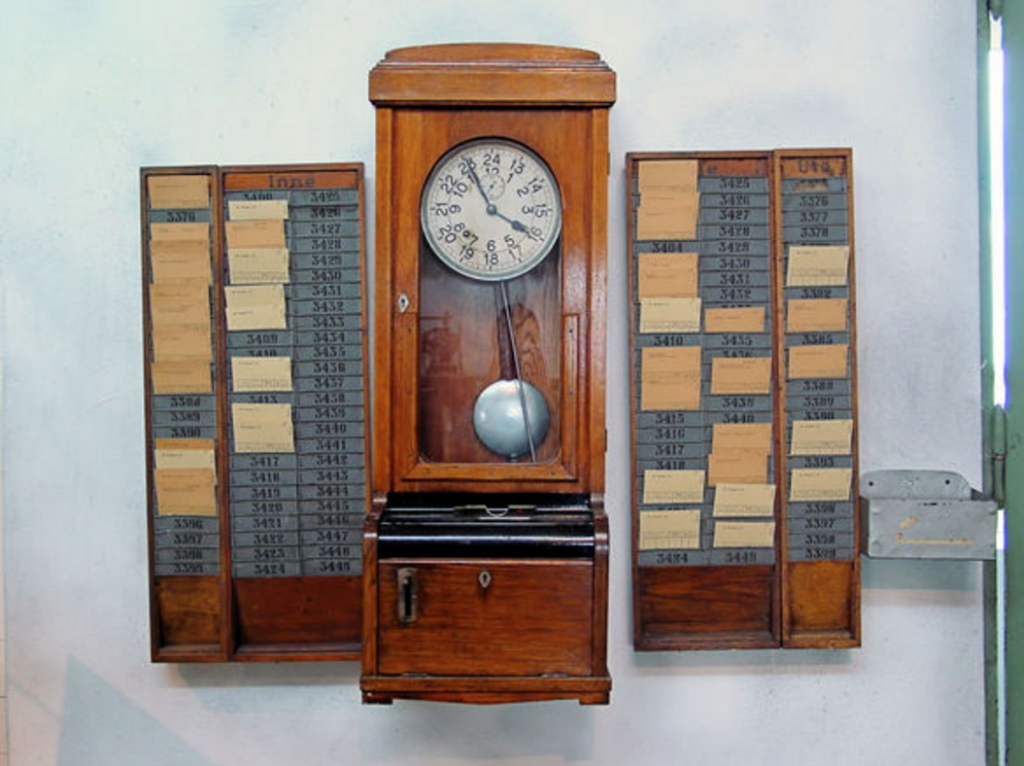Workers hated the old fashioned time clock at work. It stamped their timecard, and management used the reported time to determine wages, attendance, and tardiness. Where- and whenever they could, workers would find ways of cheating or maneuvering the apparatus just as they swore the machine cheated them with inaccuracies. Making the process more user friendly is but one of the advantages of a web based timeclock.
- User friendly. The old time clock on the wall was a symbol of the us against them troubles in a workplace. Automated as it was for the time, it represented regimentation and the heavy hand of management. The web based time clock certainly does not do away with the discipline of time and attendance. But, because it is tech friendly, it has become user friendly.
- Carbon footprint. The web-based time clock technology is rich with data and report capability. On the other hand, neither you nor the employee have to print anything. There are no time cards or printed records. The software system reports electronically in real-time to Human Resources, Payroll, and authorized personnel.
- Convenient. With 24/7 access from any internet channel: laptop, desktop, tablet, or smartphone. there are no excuses for not using the web-based time clock. Outside sales, remote workers, retail stores, and franchise locations – reporting is easy. The currency of the data gives management valuable information on work assignments and staffing needs.
- Regulation compliant. Your web-based time clock reflects current wage legislation. For instance, recent changes in wage calculation for overtime and wage-related rules in the Affordable Care Act almost defy manual computation and record keeping. But, web-based programming easily switches to new regulations as the come along.
- Accurate reporting. Digital reporting eliminates error and interpretation. There is not estimating or guessing, so managers and employees learn to trust its outcomes. This trust is important when time and attendance are part of an individual performance assessment. But, the data also improves project management, budget forecasting, and any related operations function.
- Privacy secured. SSL encryption protects the overall system, but access can be permitted for managers with bona fide reason to access the data. Management can use the data for planning and organization, recruiting and discipline. Senior management can research data on labor costs and correlate those costs with division performance.
- Benefits administration. A web-based time clock system will connect with discretionary and non-discretionary benefits. Employees can check on and change beneficiaries, and the system will accrue data on earned vacation and paid-time off.
- Business savings. Small business owners remark on how much a web-based time clock relieves them to grow their core business. Because it is self-administered, fast and accurate, secure and seamless in operation, the system saves hours of manual work that would otherwise be run by additional staff.
- Schedule work. Employees can see their schedule work hours, and managers can shift or transfer assignments at their convenience. Schedules can appear daily, weekly, and monthly; this prevents starting a shift short staffed and unproductive.
The U.S. Bureau of Census and the U.S. Bureau of Labor Statistics report the direct loss to business of absenteeism at $40 billion. That’s a staggering amount that technology can help solve. A web-based time clock puts power and savings in the hands of management. And, it empowers employee to check schedules, make changes, and report time accurately. Because participation increases engagement, it is a real plus to business owners big and small.

